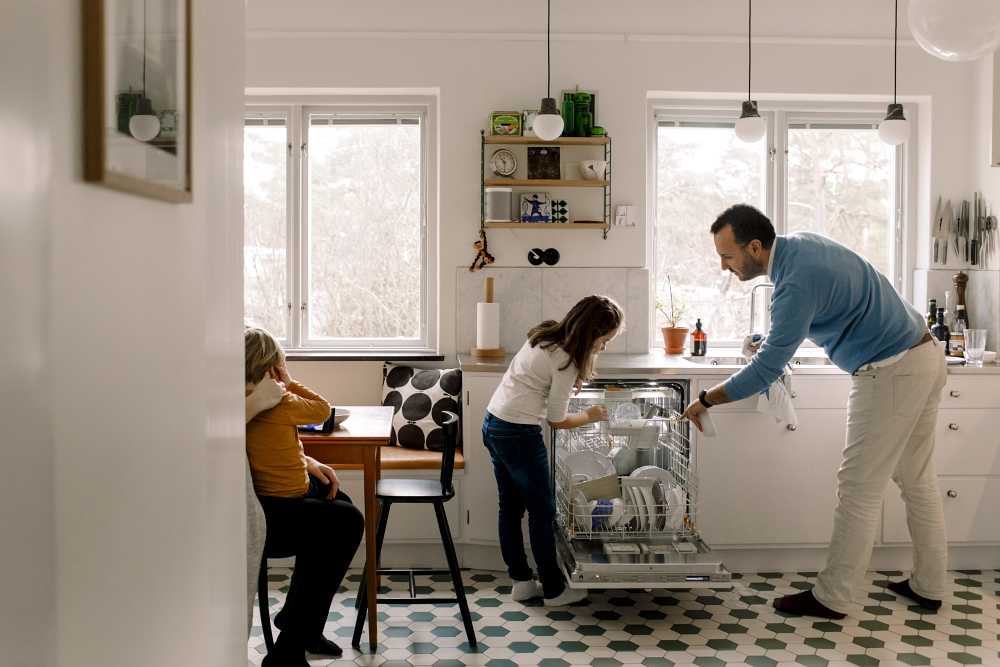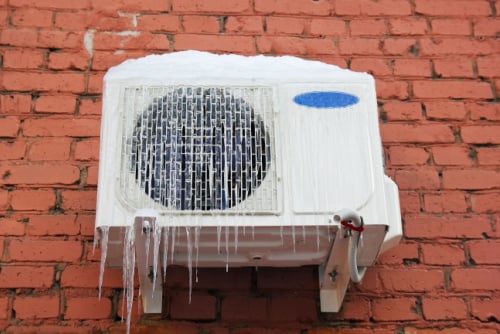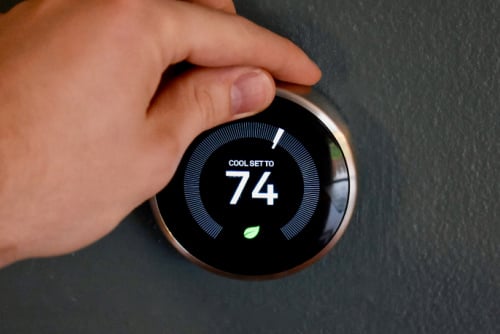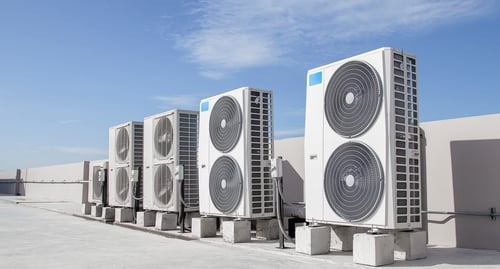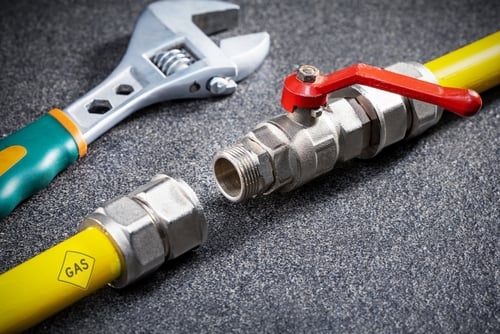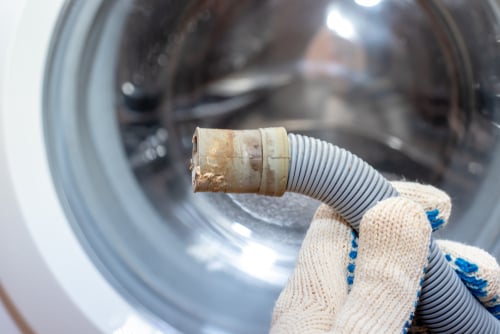Your fridge’s ice maker has one simple job: Keep those icecubes coming so you can cool down your drinks.
When it stops working—like any machine—start by trying to figure out why. There’s a good chance that, with our help, you can diagnose the problem and fix it yourself. Then fix yourself a nice cold drink.
Know How Your Ice Maker Works.
- The ice maker gets its water through a quarter-inch supply line from the refrigerator to a water pipe or filter.
- The supply line leads to the refrigerator’s water fill valve, which is controlled by a thermostat.
- The fill valve sends water through a fill tube into the ice maker assembly, where it freezes in an ice mold.
- When the water freezes, the thermostat shuts off the water supply.
- Then it switches on a heater that warms the cubes just enough so they’ll release from the ice mold.
- A small ice maker motor then rotates the ice ejector arm, which pushes the cubes from the mold into an ice collection bin.
- The water fill valve then turns back on to fill up the ice mold again, and the process repeats.
- When the bin fills up, the ice raises a bail wire, shutting off the ice maker unit until the bin level drops.
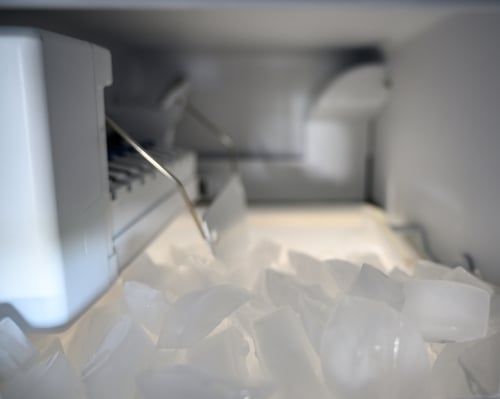
Ice Isn’t Ejecting From the Mold.
If there’s ice in the mold, it’s a safe bet the water supply isn’t why the ice maker is not working. Make sure your ice maker is getting power.
Check the control arm and see if it’s in the “on” position. If it’s an electronic on-off button, make sure it reads “on.” It’s not a bad idea to check the instruction manual that came with your refrigerator.
If the switch checks out, the reason the ice maker is not working is probably the motor, gearbox or electrical connection.
Pull the fridge out from the wall, shut off the water supply, and disconnect the plug. Then find the quick-release plug, located on the back inside wall of the freezer. Unplug it and plug it back in. Empty the ice from the mold, then restore the power and water supply and make sure the ice maker setting is on. Ice should start ejecting again in a few hours. If not, chances are you need a new motor or gearbox.
Ice Isn’t Being Made.
It could be that no ice is being produced, period. In that case, the first place to check is the water line, where ice may have formed and is blocking the flow of water.
The simplest fix is to unplug and defrost the fridge to melt the ice in the line. Turn off the water supply and unplug it from its power outlet. Use a hair dryer or pour hot water on the clogged portion of the line. Then put everything back in place and see if you were successful in repairing your ice maker.
The Ice Cubes Are the Wrong Size.
To adjust the amount of water that fills the mold each cycle, pull off the cover—the plate at the front of the ice maker—from the ice maker. Underneath you’ll see a screw and spring assembly and a plus/minus indicator to control the amount of water. Screw toward the minus symbol for less water or toward the plus symbol for more. 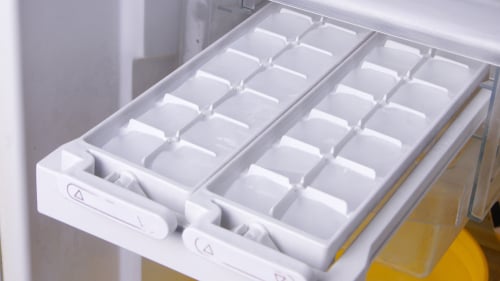
A Few Possible Reasons Your Ice Maker is Not Working.
Is Your Icemaker On the Level?
If your ice maker doesn’t sit level inside your fridge, the ice in the mold won’t be level either, and the ejector assembly may not work properly.
Use a bubble level and make sure the refrigerator itself is plumb. If it’s off kilter, adjust the feet of the fridge until the bottom is level.
If the fridge is level, check the ice maker mounting. Make sure the screws are tight and the mounting brackets are flat. Replace any bent pieces.
No Pressure, But You Should Check the Source.
For your ice maker to work, your home’s water pressure should be at least 20 PSI. Test it by shutting off the water supply valve.
Detach the water supply line from your fridge’s water inlet valve and place the line over a bucket. Then go turn the water supply back on. If you have a strong flow coming out of the line, the issue is probably an obstruction in the refrigerator’s water inlet valve or a defective valve solenoid.
A weak flow means there’s a problem with either your home’s water line or water supply valve, and that’s why your ice maker not making ice.
About That Solenoid…
The water line attaches to a solenoid—an electrical component that activates a valve to allow water to flow into the ice maker—at the back or bottom of the fridge, then flows to the ice maker.
The solenoid may have failed or may not be getting power, resulting in your ice maker not making ice. Unplug the refrigerator and try to remove the sediment screen inside the solenoid. Flush it clean with water and check the seals or diaphragms, then put it back in place and see if it makes a difference.
Check Your Water Filter.
When’s the last time you changed your water filter? The stuff that the filter removes from your tap water will eventually clog your filter, restricting the flow of water to the fridge and compromising the quality of the ice.
At Frontdoor®, we know you love getting things done around the house. Staying in control of your to-do list is easier when you can keep the small things from turning into bigger—and more expensive—ones. We’re here to answer your home repair and maintenance questions in real-time.
Want to learn more about putting your ice maker back in working order, or any other household tips? Download the app if you haven’t already, and chat with a helpful, friendly Frontdoor Expert.
Frontdoor assumes no responsibility, and specifically disclaims all liability, for your use of any and all information contained herein.
Was this article helpful?

